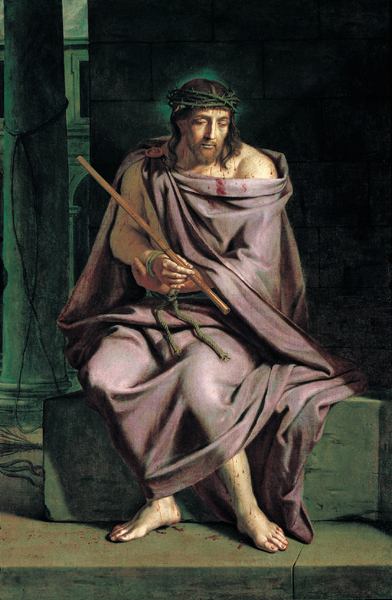Image Details

Bob Jones University
“Arrayed in the triumphal dress and wearing armlets, with a laurel crown upon his head, and holding a branch in his right hand”—so the third-century Roman historian Dio Cassius recorded the triumphator’s appearance during a victory procession. The description bears a strong resemblance to French artist Philippe de Champaigne’s portrayal of Jesus in “Christ of Derision” (c. 1655), which is based, primarily, on Mark’s description: “[The soldiers] clothed him in a purple cloak; and after twisting some thorns in a crown they put it on him” (Mark 15:17). (Although in Mark 15:19 the soldiers strike Jesus with a reed, according to Matthew 27:29 the soldiers “put a reed in Jesus’ hand.”)
Mark opens the passion story with this scene in the courtyard of Pilate’s praetorium, or headquarters, to accentuate the similarity to imperial processions, which began in the courtyard of the Roman praetorium, where the emperor’s guard was stationed.
